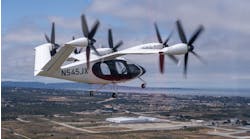Boeing-employed members of the International Association of Machinists and Aerospace Workers walked off the job just after midnight Friday 13, Pacific time, a few hours after rejecting a tentative contract and approving the strike.
IAM’s 751 and W24 locals represent 33,000 Boeing employees, most of them machinists in Washington state in commercial airplane production of the 737. Late Thursday night, 94.6% of voting members rejected a tentative agreement with Boeing. A slightly larger majority, 96%, voted to approve the strike.
The strike will immediately disrupt production of Boeing’s 737 Max, 777, and 767 jets, but not its 787 jets, which are assembled in South Carolina by non-union workers.
The tentative agreement rejected by union members would have increased wages by 25% over a four-year period, including an immediate 11% increase, and increased company 401(k) contributions. It also would have located production of Boeing’s next single-aisle passenger jet in the Washington state if production starts within four years of the contract.
IAM members, however, are demanding a 40% pay increase, a defined-benefit pension, protections against forced overtime, and a guarantee the next plane will be built around Puget Sound regardless of when production starts. Critics of the tentative agreement also noted that it would have eliminated an existing 3-6% annual bonus.
In a short statement following the rejected contract, Boeing acknowledged the union’s stance.
“The message was clear that the tentative agreement we reached with IAM leadership was not acceptable to the members,” Boeing said. “We remain committed to resetting our relationship with our employees and the union and we are ready to get back to the table to reach a new agreement.”
The last Boeing-IAM contract, negotiated in 2008 and extended twice, was struck after a 58-day strike cost the company an estimated $100 million daily. Aerospace analyst Sheila Kahyaoglu, cited by the Associated Press, estimated a new strike could cost the company about $3 billion based on inflation over the past 16 years and current rates for airplane production.




